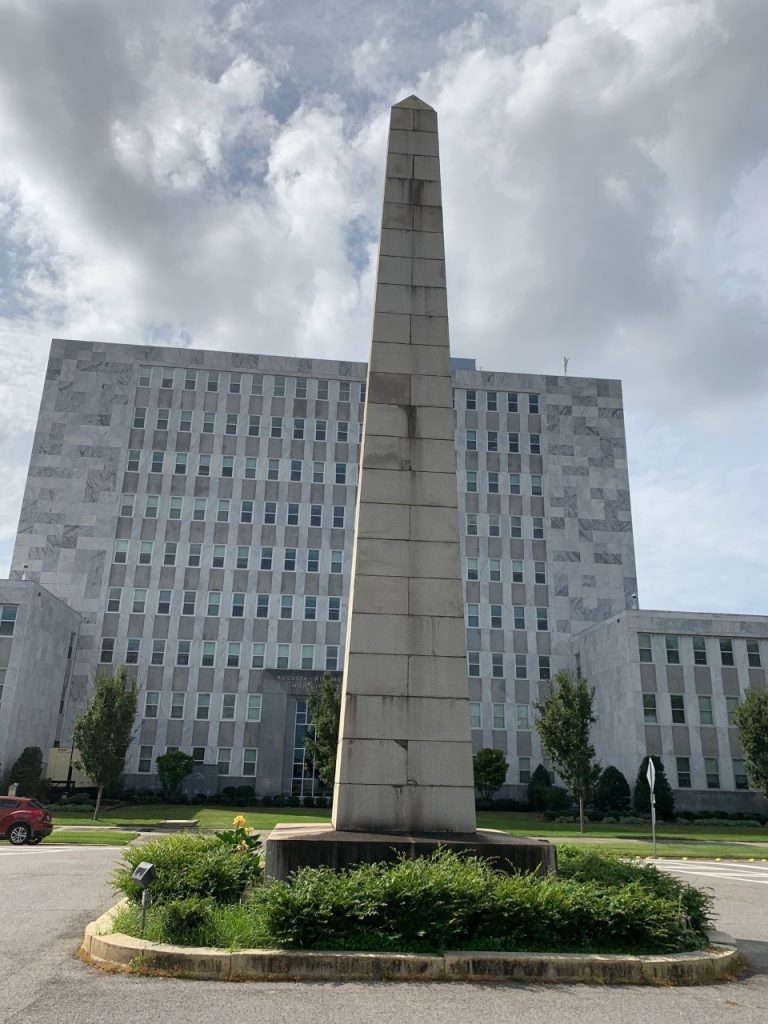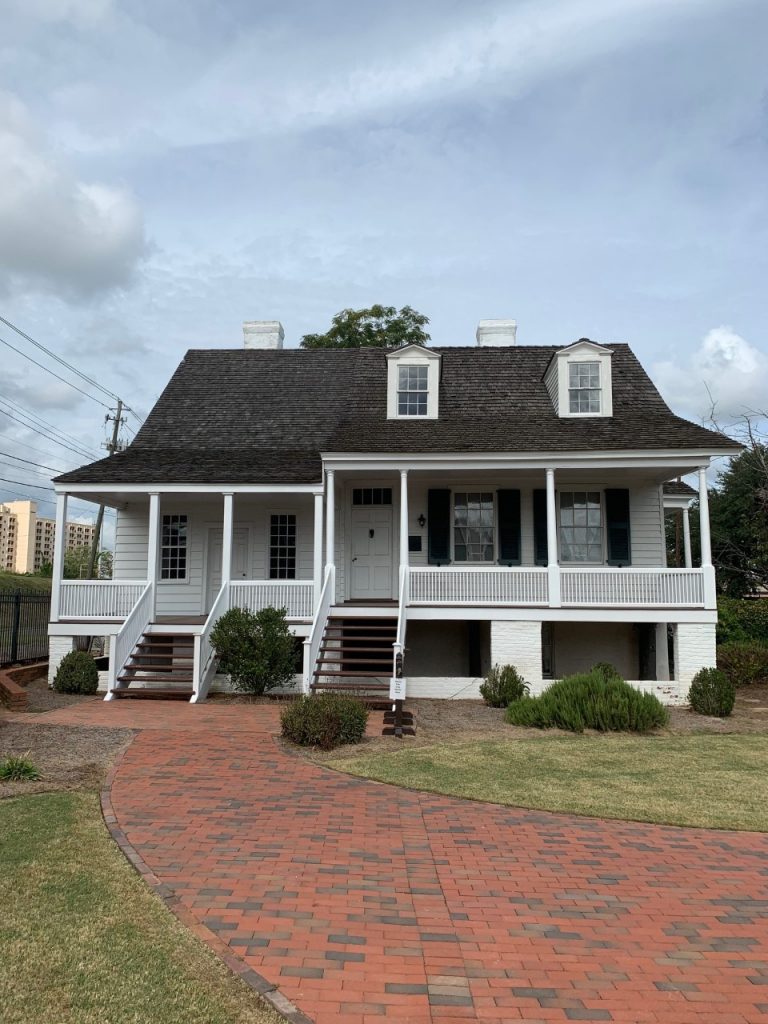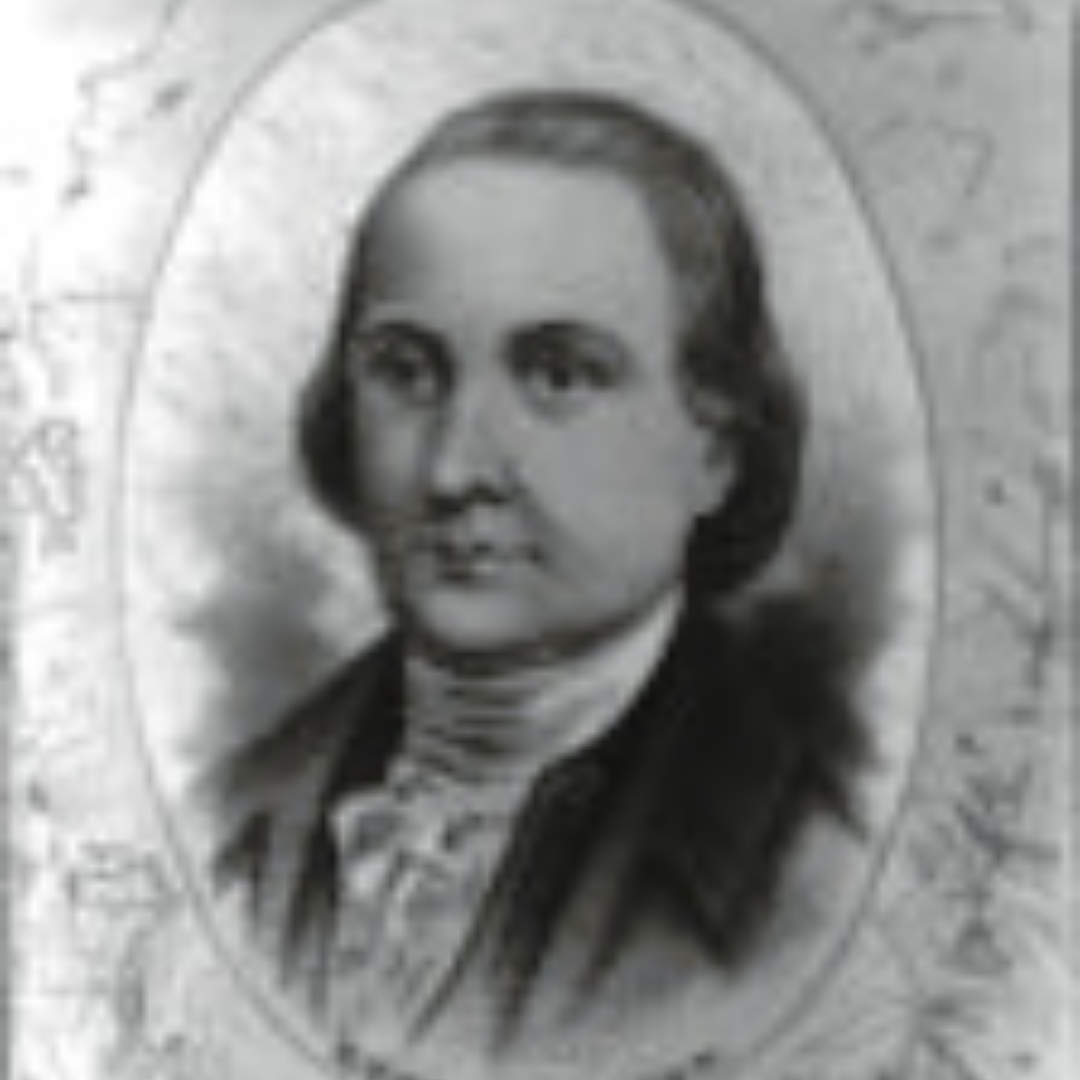In the center of Greene Street and across from the Municipal Building in Downtown Augusta sits an obelisk known as the Signer’s Monument. Underneath it lies the graves of Lyman Hall and George Walton, two of the three signers of the Declaration of Independence from Georgia.
Less than a mile away from the Signer’s Monument is Meadow Gardens, Walton’s home. The modest home is located near the corner of Walton Way and 13th Street. It has been preserved and holds weekday tours.

Walton’s Life
Not much is known about Walton’s early life. We do know he was possibly born in 1741 and orphaned soon after. Other records date his birth to either 1749 or 1750, however there is no firm record of the exact year.
After starting an apprenticeship in carpentry, Walton abandoned that trade and moved to Savannah to study law, where he joined the bar in 1774.
In 1776, Walton was elected to the Second Continental Congress, and he was one of the youngest signers of the Declaration.
MORE: Something You Might Not Have Known: Lost Confederate Gold
Once the Revolutionary War began, Walton volunteered for service and received a commission as colonel of the First Georgia Regiment of Militia under General Robert Howe. In 1778, Walton was injured and captured by the British in Savannah. He was released in a prisoner exchange after a year of confinement.
After the war, Walton remained in law and politics. He was elected governor of Georgia, but would only hold that office for two months. He was expelled from the office after being indicted on criminal charges related to his political battles with fellow Georgia signer of the Declaration, Button Gwinnett.
[adrotate banner=”54″]
Walton was never convicted of any crime. He went on to win one term in the House of Representatives the following year. Following his term, Walton became the Chief Justice of Georgia where he remained until 1789 when he was elected Governor of Georgia for a second time.
Curiously, he only served as governor for a year. During that time, the capital of Georgia was Augusta, Walton’s adopted hometown.
In 1795, Walton was appointed to the U.S. Senate to fill a vacancy, but would only serve four months as he lost the election of 1796. His loss of the election effectively ended his political career, however, he had gained the distinction as the only Founder to serve in all three branches of government.
MORE: Something You Might Not Have Known: The USS Augusta

Walton’s later years
Walton’s participation in the founding of the United States brought him fame, but apparently never brought him fortune. In his later years, Walton retired to his sizable farm at Meadow Gardens. However, it is not clear if he ever actually owned the land.
It is worth noting that although Walton ran a plantation, he never owned slaves. In fact, he was an abolitionist before there was a serious abolitionist movement.
According to historian Michael Crawford, Walton, a Quaker, wrote a letter to his friend Thomas Newby. He urged him to free his slaves even if such an act broke the law.
Walton died in 1804 and his body was later exhumed to be placed next to fellow signer Lyman Hall under the Signer’s Monument.
The third signer from Georgia, Button Gwinnett, died during the Revolutionary War; not from British bullets, but rather from wounds sustained in a duel. By the time of Walton’s death, Gwinnett was long dead and his burial site was unknown.
[adrotate banner=”26″]
It is probably just as well that Gwinnett’s body was never recovered and placed under the Greene Street monument. In life, the two men were bitter enemies. Walton was even censured for playing a role in setting up the duel that would claim Gwinnett’s life.
Walton would have been terrified at the thought of spending eternity entombed next to his hated foe.
…And that is something you might not have known.
Scott Hudson is the Senior Reporter for The Augusta Press. Reach him at scott@theaugustapress.com











